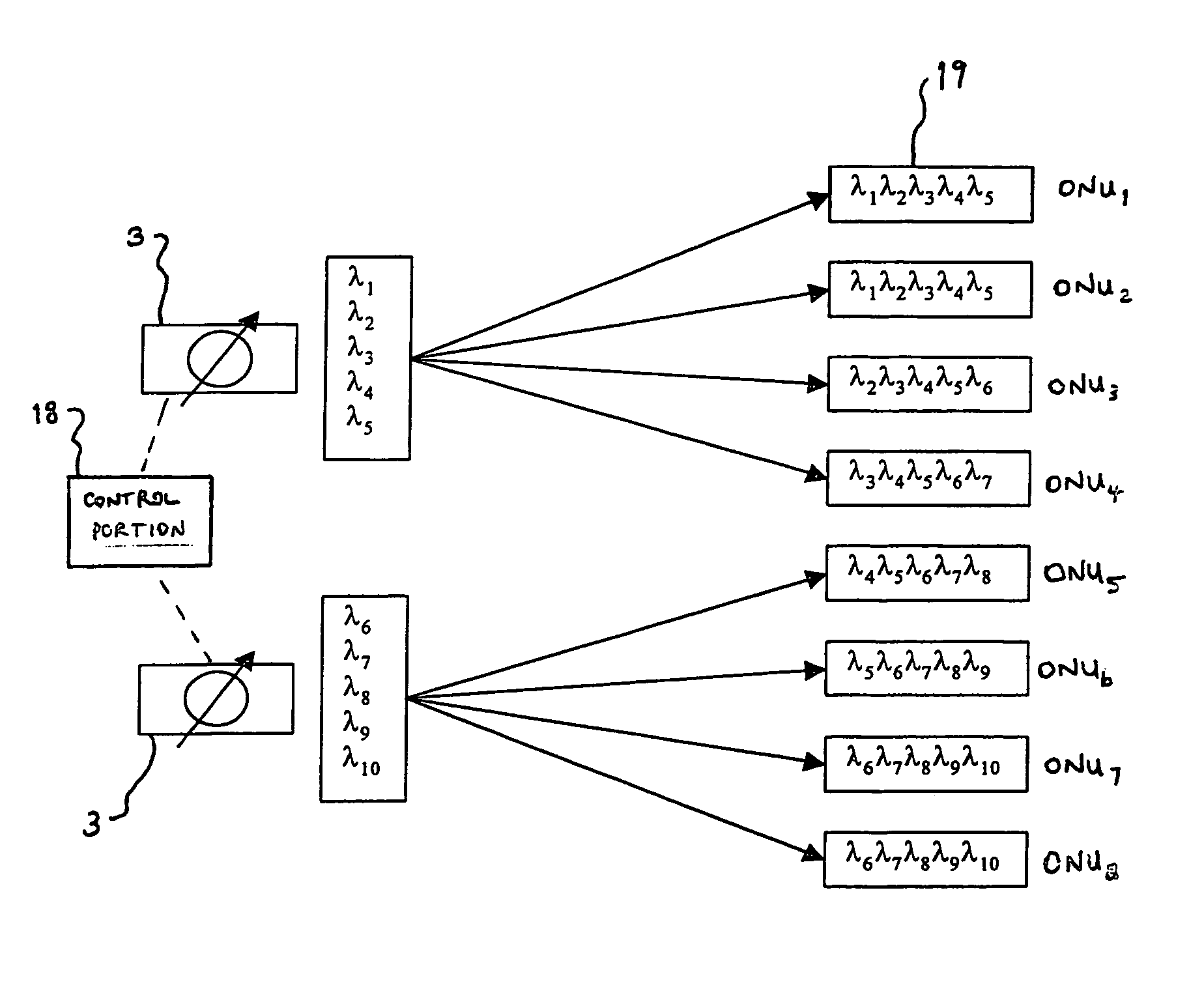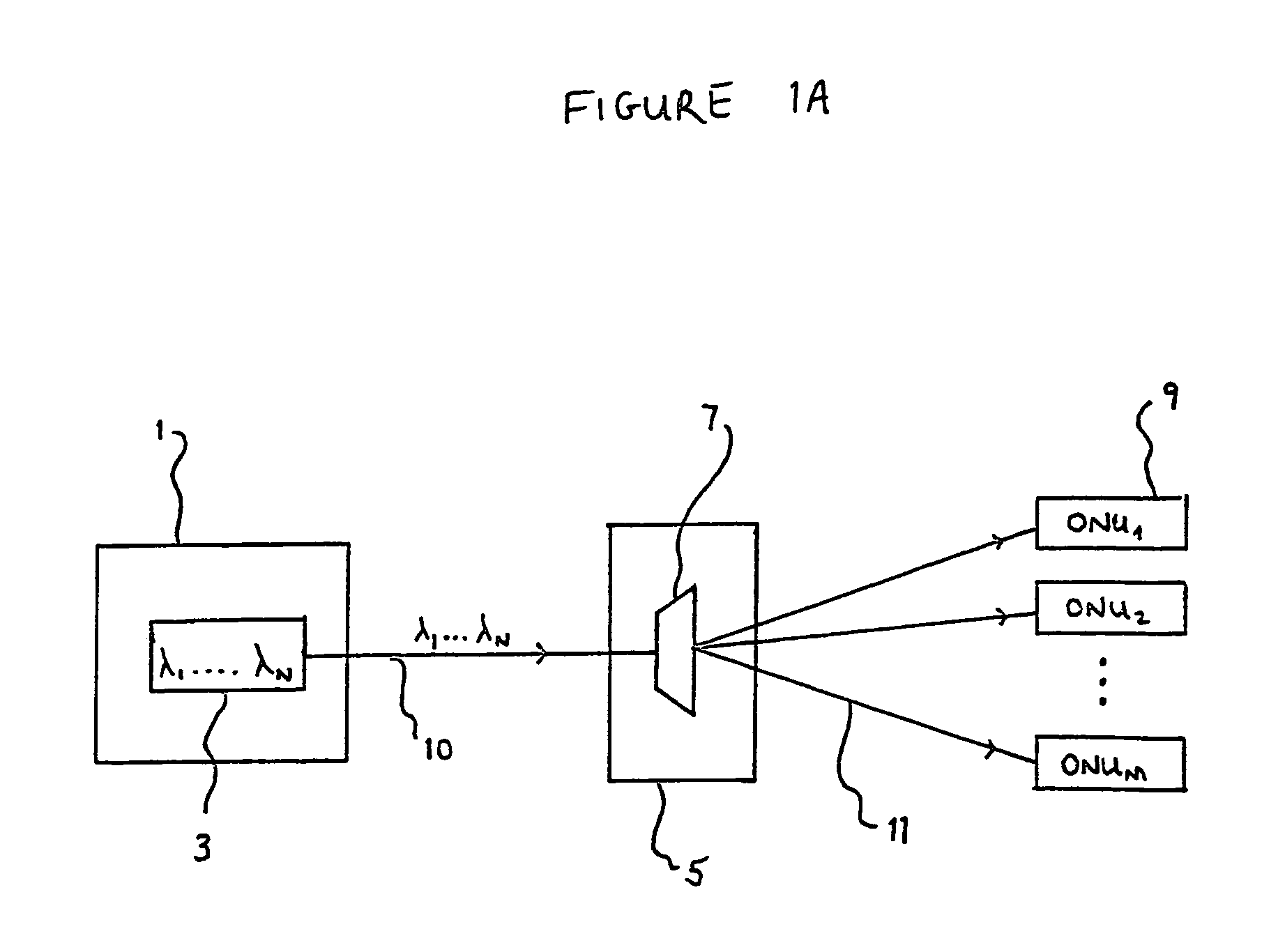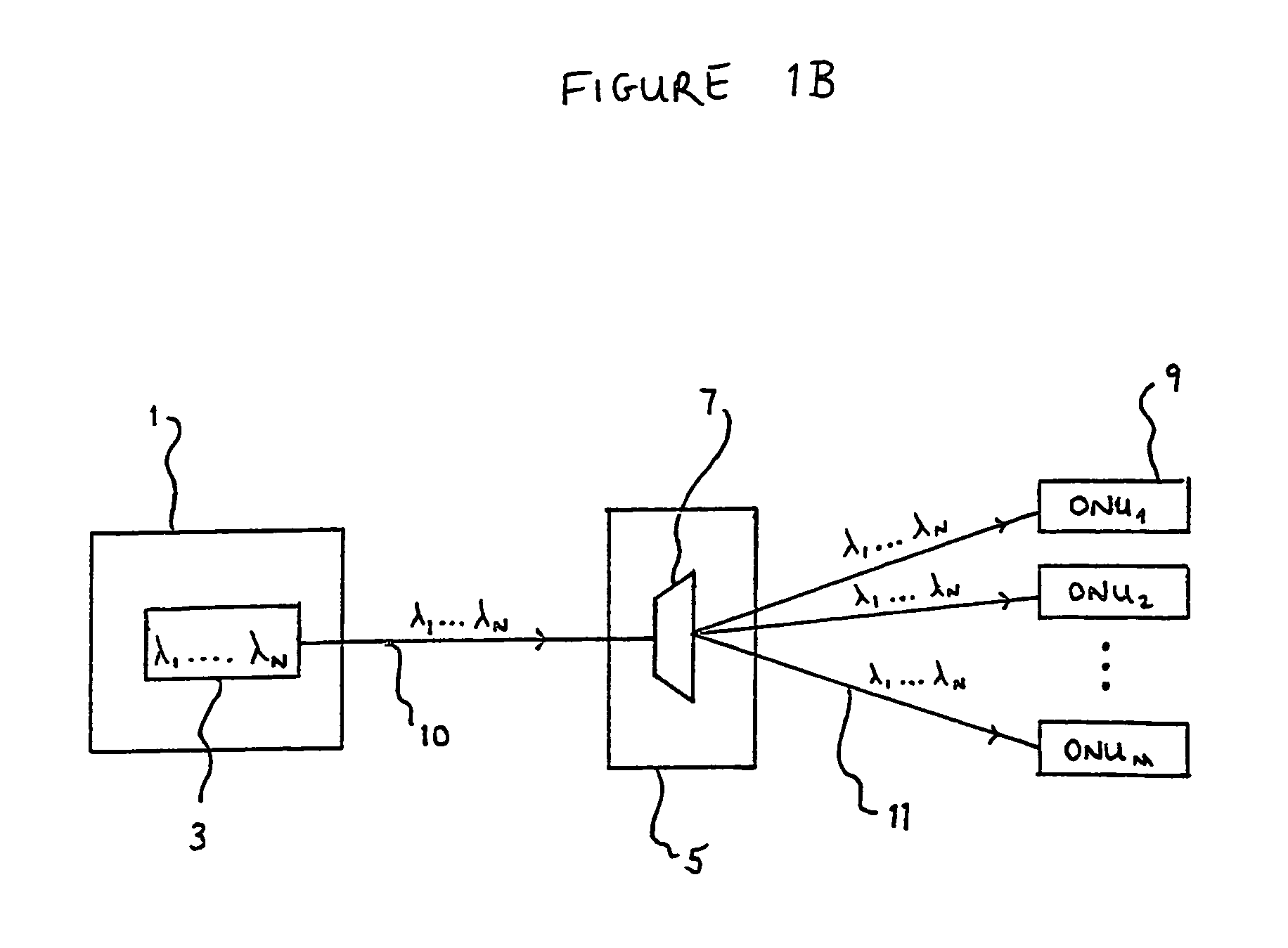Optical network units preconfigured to accept predetermined subsets of wavelengths
a technology of optical network units and wavelengths, applied in the field of optical network units, can solve the problems of increasing delay on that channel, unable to redistribute bandwidth in response, and simple implementation,
- Summary
- Abstract
- Description
- Claims
- Application Information
AI Technical Summary
Benefits of technology
Problems solved by technology
Method used
Image
Examples
Embodiment Construction
[0050]FIG. 3 shows the basic principle of a staggered filter optical network architecture embodying the present invention. In this embodiment, there are two tunable lasers 3 capable of transmitting a total of 10 wavelengths λ1 to λ10 to a total of eight optical network units 19, ONU1 to ONU8. The first tunable laser 3 is capable of transmitting one of five wavelengths λ1 to λ5, and in the present example is tuned to λ3. The second tunable laser is capable of transmitting one of five wavelengths λ6 to λ10, and in the present example is tuned to λ8. Control portion 18 is in communication with, and controls the operation of, the tunable lasers 3.
[0051]Each optical network unit 19 employs a bandpass filter which allows a group of five consecutive transmitted wavelengths to be passed. For example, as indicated in FIG. 3, ONU1 passes wavelengths λ1 to λ5, while ONU4 passes wavelengths λ3 to λ7. The table of FIG. 4 summarises the passband of the filters in each of the ONUs 19, where shaded...
PUM
 Login to View More
Login to View More Abstract
Description
Claims
Application Information
 Login to View More
Login to View More - R&D
- Intellectual Property
- Life Sciences
- Materials
- Tech Scout
- Unparalleled Data Quality
- Higher Quality Content
- 60% Fewer Hallucinations
Browse by: Latest US Patents, China's latest patents, Technical Efficacy Thesaurus, Application Domain, Technology Topic, Popular Technical Reports.
© 2025 PatSnap. All rights reserved.Legal|Privacy policy|Modern Slavery Act Transparency Statement|Sitemap|About US| Contact US: help@patsnap.com



